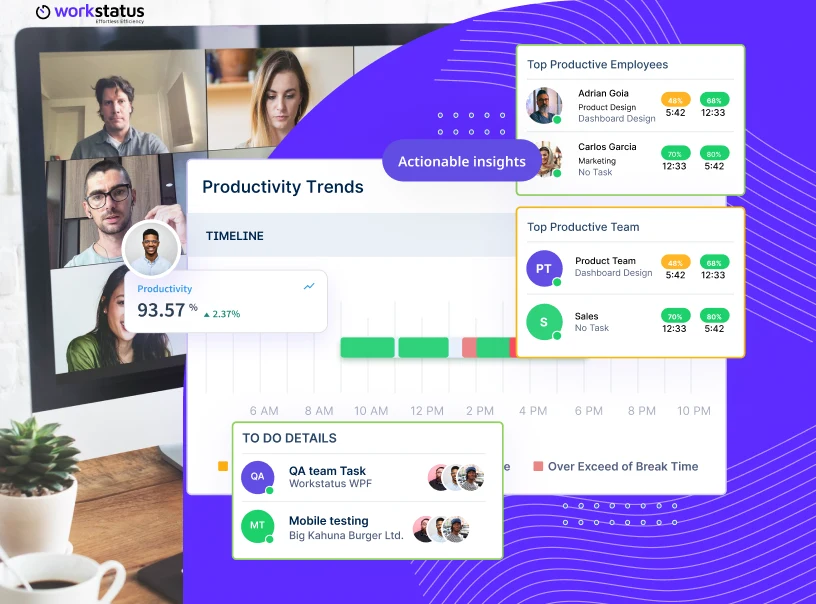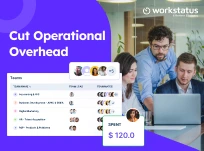Table of Contents
Running an office team isn’t as simple as “everyone’s at their desks, so the work must be getting done.”
Talk to any business owner, and you’ll hear the same frustrations:
- Tasks slipping through
- Attendance mismatches
- Constant micromanaging
- Missed deadlines
The truth? Physical presence doesn’t equal productivity. What you need is visibility, accountability, and data you can trust.
That’s where productivity tools step in. But here’s the twist: not all tools are built for in-office teams.
Hubstaff has earned its name, but it’s designed with remote-first setups in mind.
Workstatus, being one of the best Hubstaff alternatives, is purpose-built for office environments, offering leaders real-time insights, attendance accuracy, and enterprise-grade scalability.
So let’s answer the real question: Which tool truly drives in-office team productivity, Hubstaff or Workstatus?
Let’s dive in.
Comparison Table
Let’s look for Workstatus and Hubstaff comparison and see who works the best.
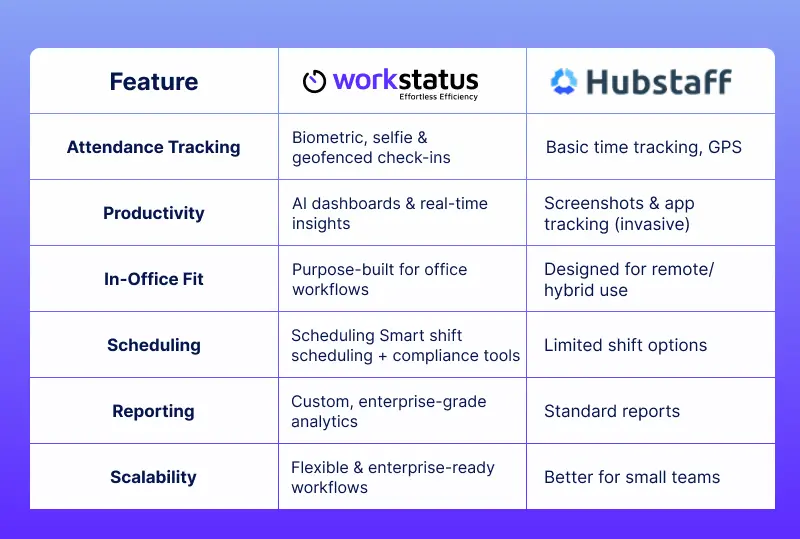
Why Productivity Tools Matter for In-Office Teams?
Having your team in the office doesn’t always mean work runs smoothly. Deadlines slip, managers chase updates, and problems often stay hidden until it’s too late.
That’s why productivity tools matter. They do more than track time; they bring clarity, order, and accountability to daily work.
Here’s what the right tool gives you:
1. Clear Tasks
Know who’s working on what, without guessing.
2. Easy Attendance
No more manual check-ins or errors.
3. Less Micromanaging
Real-time insights replace constant follow-ups.
4. Early Problem Alerts
Spot issues before they delay projects.
5. Trusted Records
Stay compliant with accurate data anytime.
6. Cost Savings
Reduce idle hours and avoid extra overtime.
Simply put, a productivity tool is more than a tracker; it helps your team stay accountable, smooths daily work, and lets leaders focus on growth.
Why Hubstaff May Not Be the Right Fit for In-Office Teams?
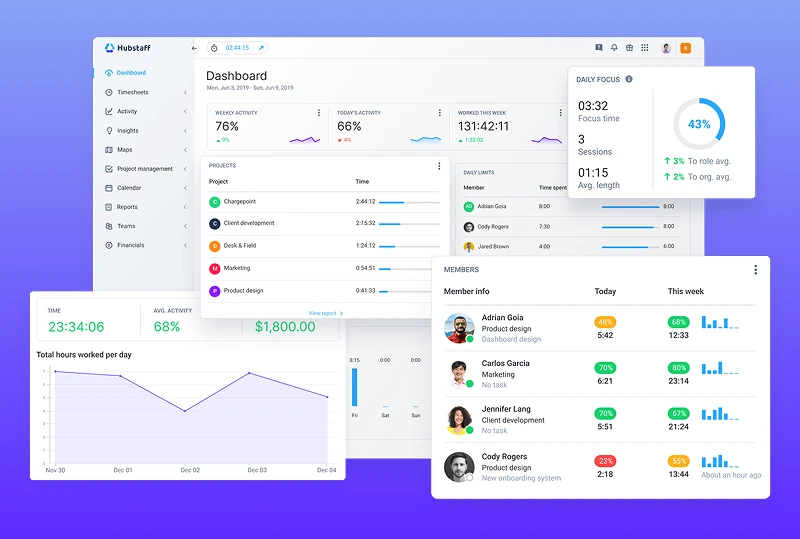
At first, tools like Hubstaff look great. Time tracking, reports, and monitoring; it has it all. But here’s the catch: it’s built mainly for remote teams.
And if your team is in the office? That’s where it starts to fall short. Think about it:
Do you really need GPS tracking when everyone’s at their desk? Or screenshots of their screens when all you want is a simple update on progress?
For in-office teams, Hubstaff can feel more like a headache than a help.
Here’s what often frustrates office teams:
1. Too Remote-Focused
GPS and remote features don’t help in the office.
2. Complicated Interface
It can confuse employees instead of helping them.
3. Weak Attendance Tools
No easy check-ins for people on-site.
4. Morale Killer
Screenshot tracking can feel like spying.
5. Costly for Little Use
You pay for features your team never needs.
User Rating:
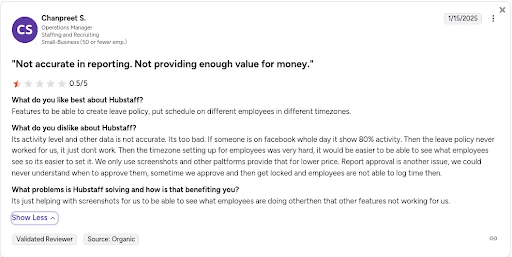
See the pattern? Hubstaff tries to solve problems your in-office team doesn’t have, and sometimes creates a few new headaches.
That’s why many managers are switching to Workstatus. Designed for office teams, it tracks work, attendance, and productivity without the clutter, confusion, or extra stress.
Finally, a tool that actually fits the way your office works.
Workstatus: Built to Maximize In-Office Team Productivity
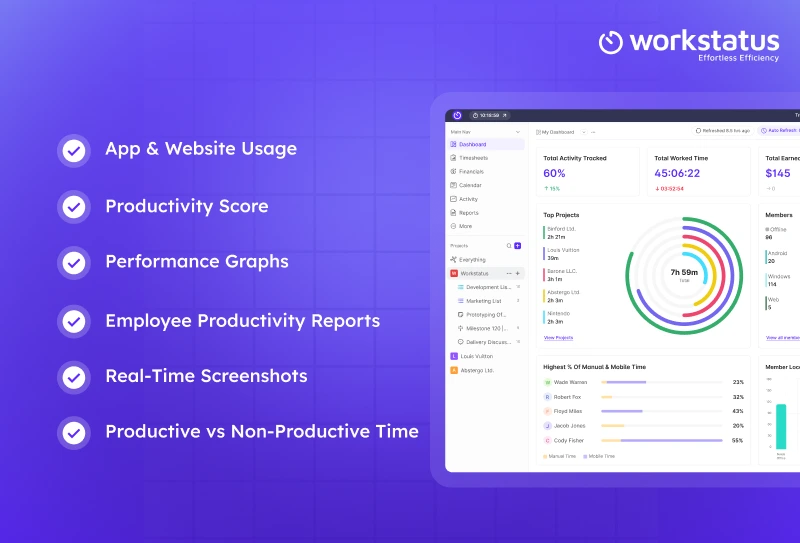
Keeping an office team productive isn’t just about showing up. You need clear insights, simple tools, and ways to track work easily.
That’s where Workstatus, the best time tracking software, helps.
Keeping an office team productive isn’t just about being present. You need clear insights, simple tools, and ways to track work without stress.
That’s where Workstatus comes in; it helps your team stay focused, accountable, and on track every day.
Here’s how Workstatus helps your in-office team:
1. App & Website Usage
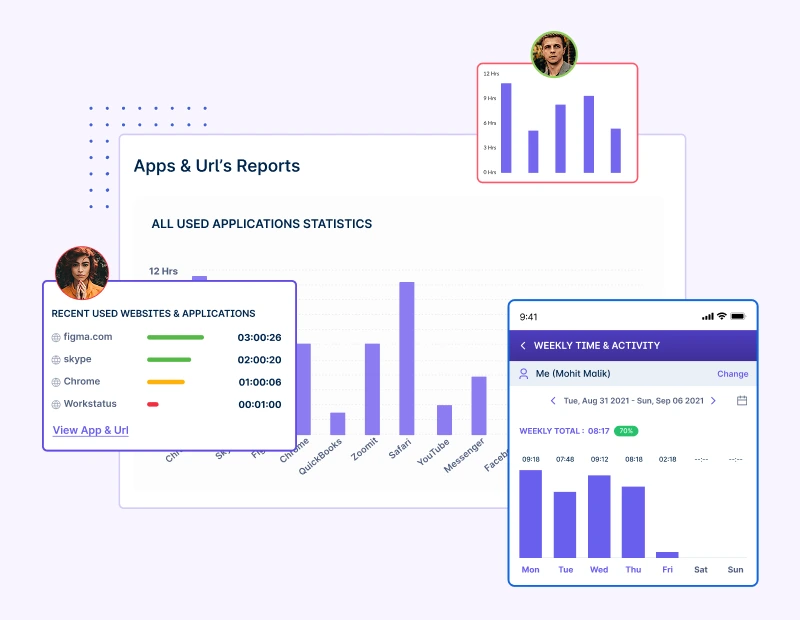
Helps you see what your team is using so you can boost focus and cut distractions.
- Track which apps and websites your team uses.
- Find tools that help vs. distract.
- 30% of the time spent on unimportant apps can be reduced.
2. Productivity Score
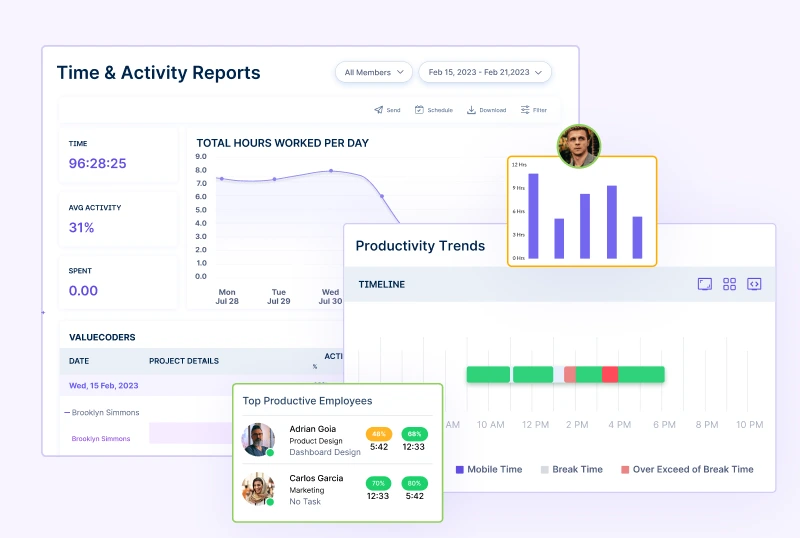
Shows who’s performing well and where the team can improve.
- Check individual and team productivity.
- Spot trends and improvements.
- Team productivity can go up 25% over time.
3. Performance Graphs
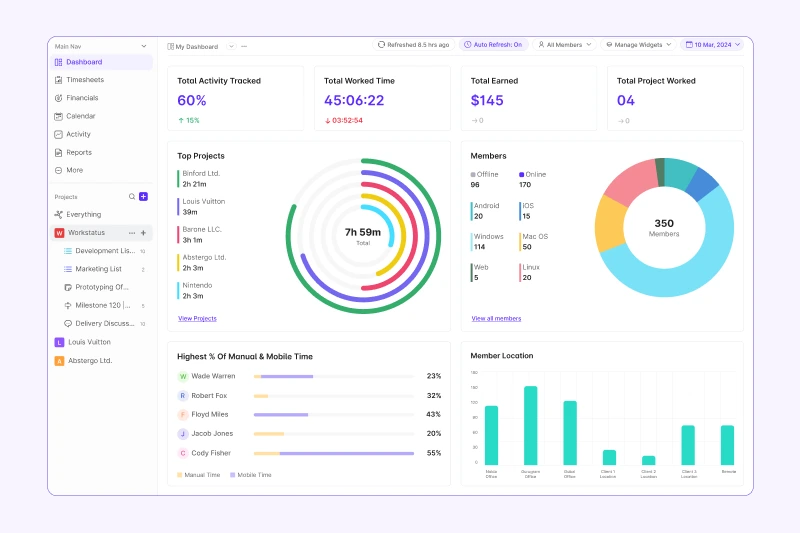
Makes it easy to spot progress and problems at a glance.
- Track project progress and workloads.
- Spot problems fast.
- Delays can drop by 20% with insights.
4. Employee Productivity Reports
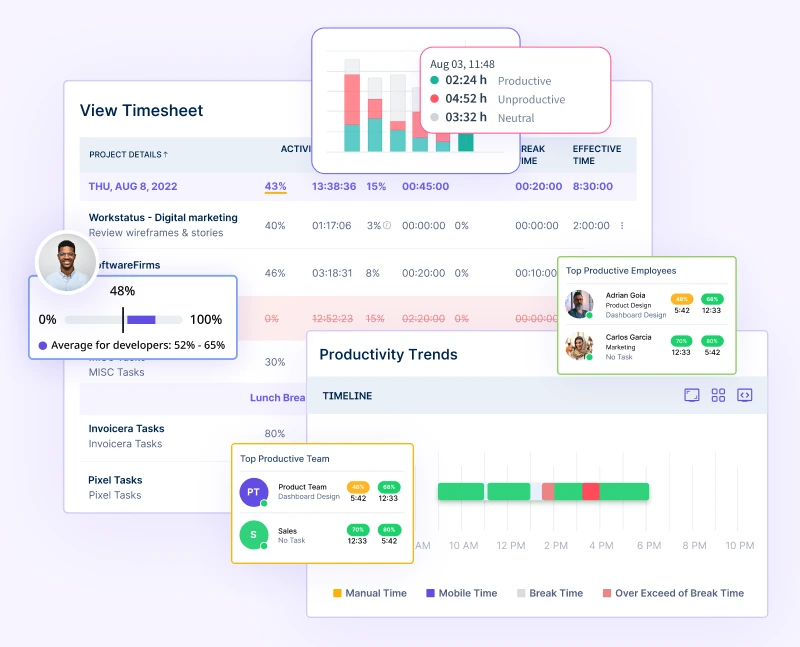
Gives clear productivity reports for each employee to plan and manage better.
- Check each team member’s work.
- Track past performance.
- 50% of repeated mistakes can be caught.
5. Real-Time Screenshots
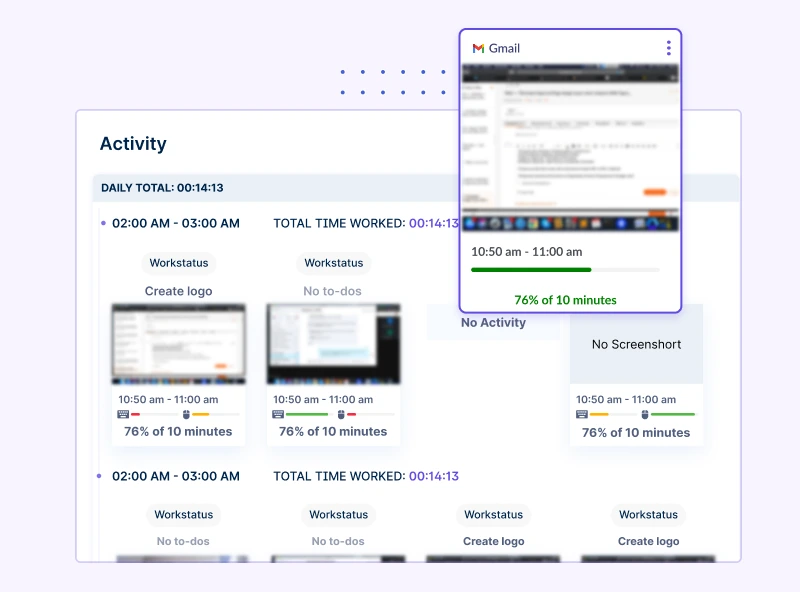
Let’s see the work in progress without micromanaging.
- Capture progress in real time.
- Keep transparency.
- 20% more tasks finished on time with visibility.
6. Productive vs Non-Productive Time
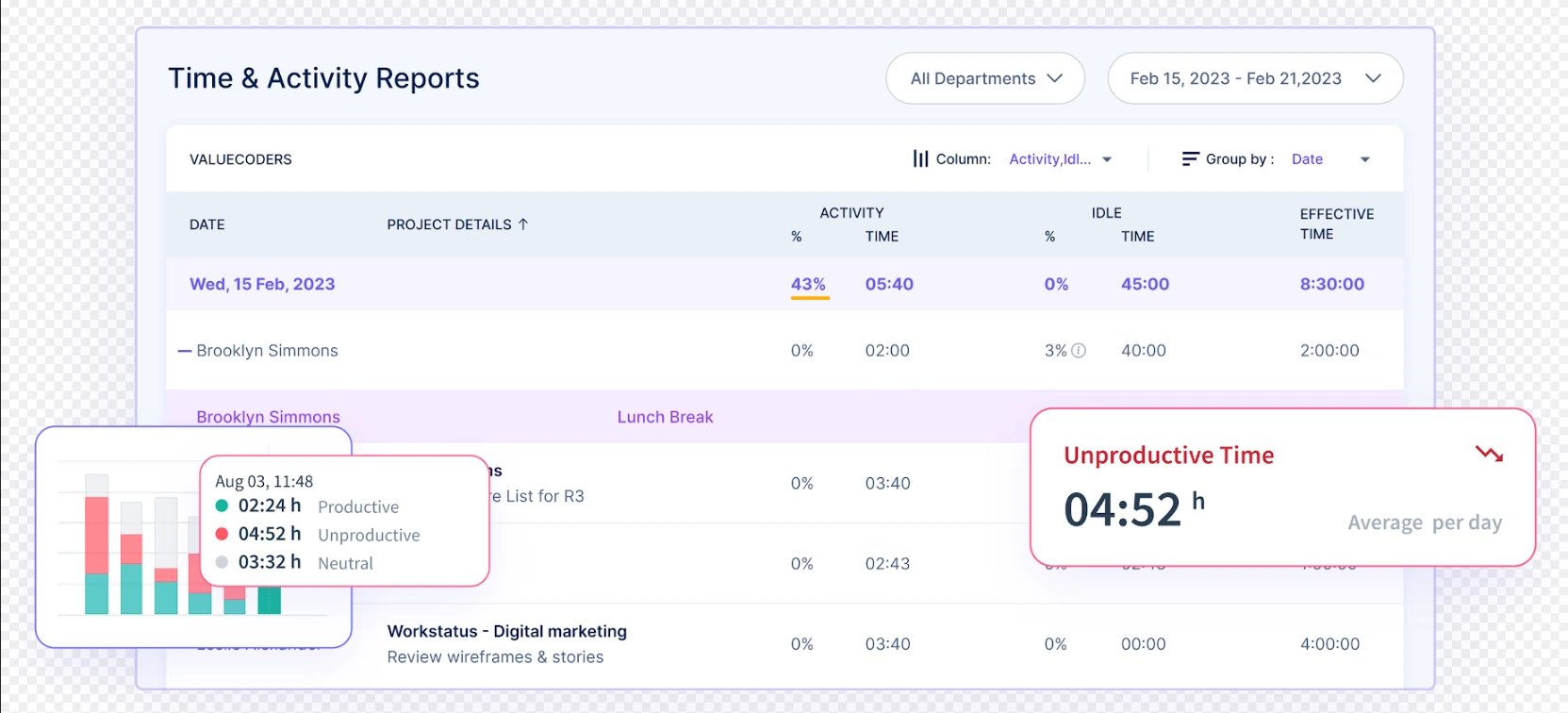
Helps track how time is spent so you can improve focus and workflow.
- See productive vs wasted time.
- Fix workflow problems.
- Focus can improve up to 35% with insights.
All these features work together to give managers a clear picture of how their office is performing in real time.
User Rating:

Next, we’ll look at a real example of how an IT firm improved its office productivity with Workstatus, the best productivity software for in-office teams, and how the right tool made a big difference.
How an IT Firm Transformed Office Productivity with Workstatus?
A mid-sized IT firm was having a hard time.
Deadlines were being missed, managers spent hours checking on work, and employees felt too closely watched.
Then they started using Workstatus, an employee monitoring software for office teams, and things began to improve quickly.
- Managers saw who was working on what
- Employees stayed focused on productive tasks
- Tasks were finished on time, and problems were spotted quickly
- The team became more responsible and confident
In just a few weeks, the office became more organized, deadlines were met, and productivity improved a lot.
With results like these, the next question for many enterprises is: how does the pricing and ROI compare? Let’s take a closer look.
Pricing & ROI: Which Gives More Value to Enterprises?
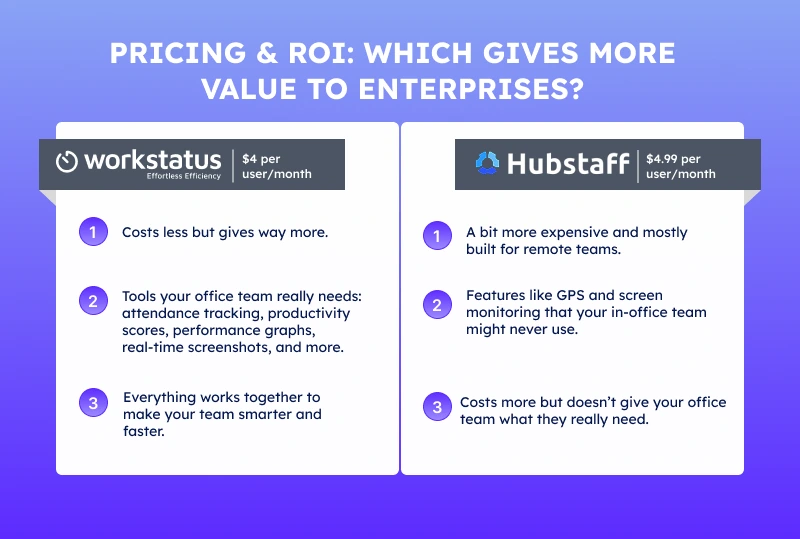
Let’s be honest; every business wants more value for less money.
Picking the right tool isn’t just about features; it’s about getting the most for what you pay.
Workstatus – $4 per user/month
- Costs less but gives way more.
- Tools your office team really needs: attendance tracking, productivity scores, performance graphs, real-time screenshots, and more.
- Everything works together to make your team smarter and faster.
Hubstaff – $4.99 per user/month
- A bit more expensive and mostly built for remote teams.
- Features like GPS and screen monitoring that your in-office team might never use.
- Costs more but doesn’t give your office team what they really need.
Workstatus gives more features, better insights, and real value at a lower price. Hubstaff might cost more, but it doesn’t match what in-office teams actually need.
Conclusion
Managing an in-office team doesn’t have to be stressful. The right tool can keep your team focused and on track.
Here’s what Workstatus can do:
- See work clearly
- Boost productivity
- Spot issues early
- Save time and costs
Workstatus, a workforce management tool, gives more features, better insights, and real value for in-office teams. Hubstaff may have its uses, but it doesn’t give your office team what they really need.
For smoother operations and a more productive team, Workstatus is the tool that works.
FAQs
Ques: Can Workstatus be used for in-office teams?
Ans: Yes! Workstatus is designed for in-office teams, helping managers track work, attendance, and productivity easily.
Ques: How is Workstatus different from Hubstaff?
Ans: Workstatus focuses on in-office productivity with features like real-time tracking, performance graphs, and attendance tools. Hubstaff is mainly built for remote teams and includes GPS and screen monitoring.
Ques: Does Workstatus save time for managers?
Ans: Absolutely. With clear dashboards and automated reports, managers spend less time chasing updates and more time focusing on results.
Ques: Is Workstatus cost-effective for enterprises?
Ans: Yes! Workstatus costs $4 per user/month, gives more features, and provides better value for in-office teams compared to Hubstaff, which is $4.99 but offers mostly basic remote-focused features.
Ques: Can Workstatus help improve team accountability?
Ans: Definitely. Tracking tasks, productivity, and time usage helps employees stay responsible and boosts overall office performance.




